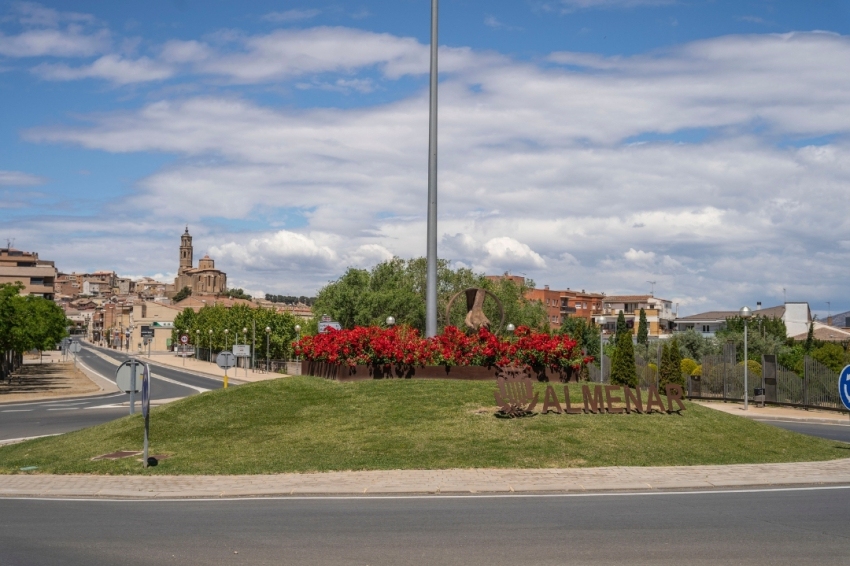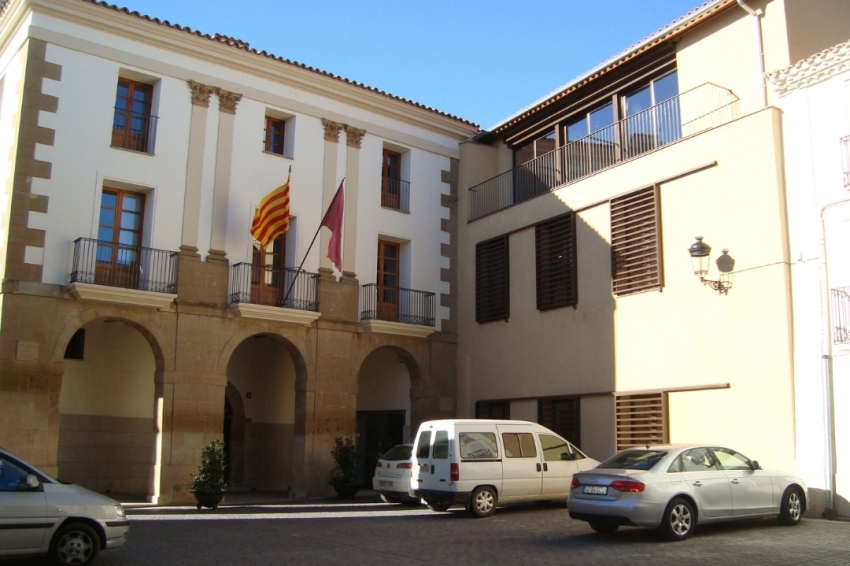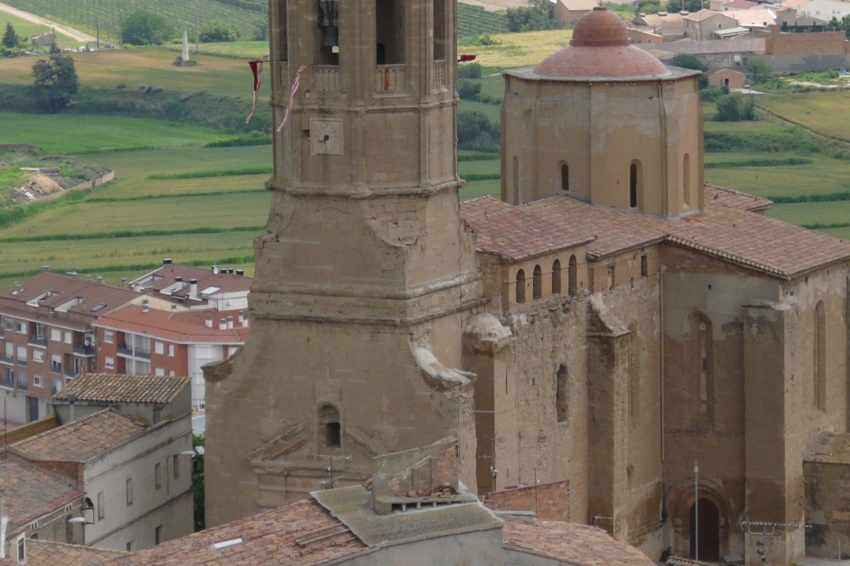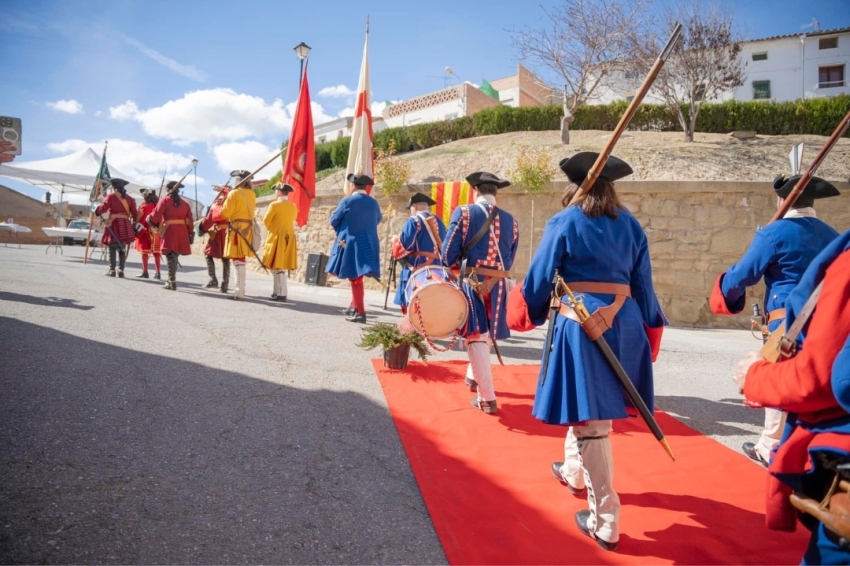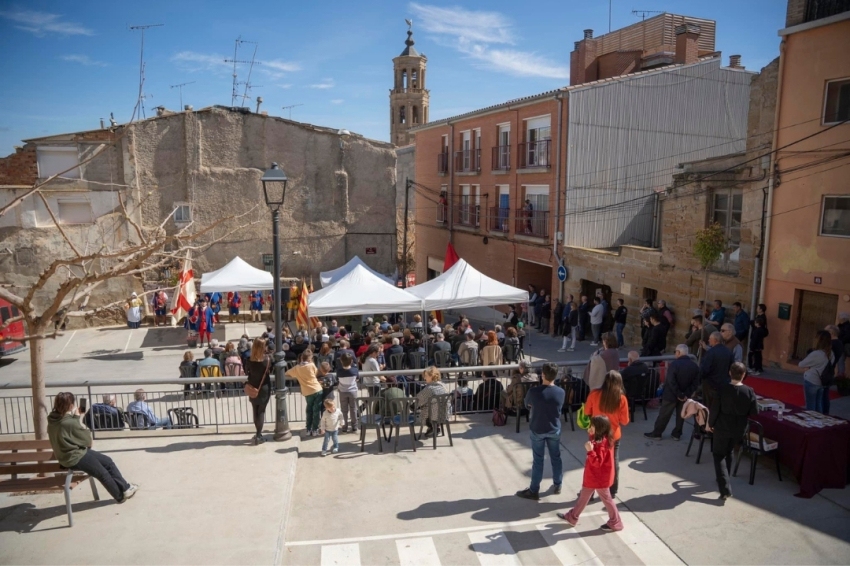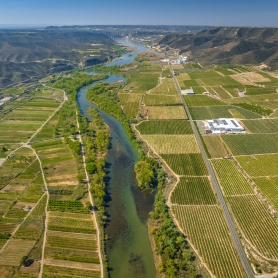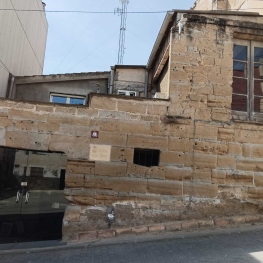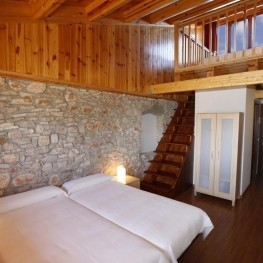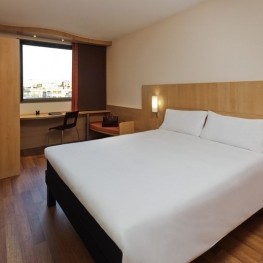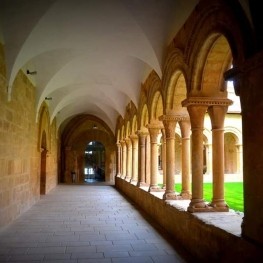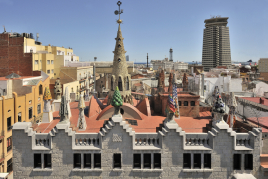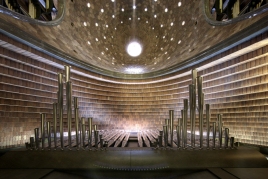Almenar
Almenar is located at the northern end of the Segrià, in contact with La Noguera and La Litera. It borders with the Segrianense terms of Almacelles (SW), Alguaire (S) and Alfarràs (N); with those of Algerri (E) and Albesa (SE), both from La Noguera; and with those of Albelda and Campell (W), from La Litera.
The term includes the town and head of the municipality of Almenar, the hamlet of Bassa Nova, popularly called Cafetín, and the old term of Santa María de Almenar (or the Tower of Santa María de Solsona ), where there was Almenara la Vella.
History of the municipality
It was the Almoravids who built the new town of Almenar, further north, presided over by the castle, of which the ruins still remain, dominating the site.
Almenara la Vella, with the lands irrigated by the irrigation canal that descends from the Sas and goes to the Noguera Ribagorzana, was given to the prior of Santa Maria de Solsona, who repopulated the territory with some families from Solsonès (the place will last until the 18th century).
Of great interest is the settlement letter granted by Ramon Berenguer IV to the new settlers of Almenar, published by Bofarull and modernly by Font i Rius, in which he granted (April 13, 1148) ipsum castrum of Almenar to one hundred men from Balaguer, which included the town and the fortress of the Almoravids with their terms.
The count promised the repopulators that the possessions and rights granted within the Usatges of Barcelona could not revert to any other lord of his domains, except for the appointment of castellan, which he made in the person of Pere Ramon d'Erill (a position that it did not imply lordship), from the lineage of the lords of Saidí, who played a decisive role at this time in the wedding of the count and Peronella and therefore in the union of Aragon and Catalonia.
The church of Almenar was given in 1150 to the dismay of the collegiate church of Solsona (which already enjoyed allodial possession of the Tower of Santa María), which is why it does not appear in the Ordinatio of 1168 of the bishopric of Lleida. A privilege from Ramon Berenguer IV himself, known for the Piel de Almenar, was added to the population charter in 1151.
Places of interest
- The Magic Park
- The Fossar
- Villa House
- Tonot House Museum
- Argolla Square
- The Gel Pouet
- Pillar of Xam
- Soldevila
- Flour mill
- Hermitage of San Sebastian
- The Castle of the Moors
- Tozal del Mexut
- The Raft
- The Cal Piqué mountain range
Nearby routes
See all routes »- Wine Route: Costers del Segre (a 3.7 km)
- Orígen, Digital Tourist Gymkhana to… (a 9.2 km)
- From the murals of Torrefarrera to… (a 14.1 km)
- Circular MTB route from Lleida to Raïmat (a 14.1 km)
- Electric car route through the Lands… (a 14.1 km)
What to do
Where to eat
El Dien Restaurant
Vallfogona de Balaguer (a 20.8 Km)We love cooking, and we love our customers to receive on the…
Hotel-Restaurant Port d'Àger
Àger (a 25.7 Km)The hotel is designed to accommodate families, friends, and corporate groups, as…
Where to sleep
Hotels Ibis Lleida
Lleida (a 21.9 Km)Our Ibis hotel in Lleida is integrated into the commercial area of…
Hotel-Restaurant Port d'Àger
Àger (a 25.7 Km)The hotel is designed to accommodate families, friends, and corporate groups, as…
Monestir de les Avellanes
Os de Balaguer (a 17.8 Km)An ancient 12th century abbey adapted to the needs of the 21st…

